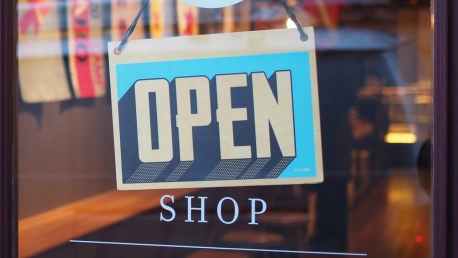Hundreds of brick and mortars seem to have been put to bed as e-commerce sites take over the consumer shopping industry. With physical shops and malls increasingly becoming a thing of the past, it seems that some retailers will surrender to bankruptcy, while others might downsize their businesses. If a physical business wants to continue to operate, it needs to adapt and develop new strategies. These have to be fit for the digital age and the current state of retail. The so-called ‘Retail Apocalypse’ might come and pass for those who can prepare for it and learn to comply with new demands.
It might be safe to assume that there will always be a place for brick and mortars. People like to peruse the showrooms and check out the latest trends as they run their fingers over the fabrics. Even millennials like to see, hold and try on products before making a purchase. But as more and more people shop online, new shopping habits start to appear. Some may progressively start to think that the comfort of their own house is preferable to the mall. Retailers may need to upgrade the in-store experience in order to keep their physical stores. After all, millennials say they usually shop “because it’s fun,” even if they don’t actually buy anything.
If retailers choose to maintain their physical stores, they need to consider upgrading the entire customer experience in order to survive, grow and evolve. Forbes shows what marketers with both online and offline brands can learn and apply from the current “retail apocalypse.”
Making shopping more fun
One of the myths surrounding the fall of brick-and-mortar stores in the retail industry states that millennials have been partly responsible for the drop. But it seems that the majority of millennials do shop in physical stores once a week, without taking into account convenience or grocery store shopping. Millennials are actually shopping more in brick-and-mortar stores than baby boomers and Gen Xers. Most of them said that they consider the experience “fun.” It seems that upgrading in-store experience is probably one of the best ways of making sure that clients will return to a physical store.
“It’s about customer experience,” said Amanda Ponzar, Community Health Charities’ Chief Marketing Officer. “Toys ‘R’ Us often didn’t have competitive prices, needed to lower online shipping costs and made it difficult to return items in store, while sales associates hassled customers, only gave store credit, and so on. Brands that will survive and thrive, whether in-store or online, need to provide a good product at a good price with good customer experience. Word gets around,” she added.
Thinking about customers’ real needs
Retailers should always think about their customers’ needs and try to provide those things that are indispensable for their clients. Production, acquisition, and shipping are getting better and better as time passes. But this has also led to a new trend in online and offline shopping: millennials have been accustomed to living in the fast lane and shopping is no exception. Conventional stores may need to provide faster and easier services, as well as a good in-store experience.
Retailers have always struggled to develop a brisk and fun environment, but e-commerce may provide them with new and original ideas. Sales seem to be as fun and engaging as always and 79 percent of millennials think that promotions are essential to the in-store experience. They also say that fast services are important for them, as 63 percent of millennials shop in brick and mortars to avoid waiting for the products to be delivered. Exclusive newsletters and emailing coupons for physical purchases might also help retailers to craft new quick and enjoyable experiences for their customers.
Adapting to the digital age
Newsletters are not the only way for retailers to prepare brick and mortar stores for the digital age. 60 percent of millennials consider social media an important part of their lives and a useful tool for getting new information about brands and products. This means that a strong social media strategy is necessary and multiple platforms might work better than one for its development. Mobile apps and mobile-friendly stores may also provide customers with a complete online and offline experience. After all, mobile shopping is getting easier every day thanks to new apps and payment methods and might be part of the reason for the demise of brick-and-mortar shops.









